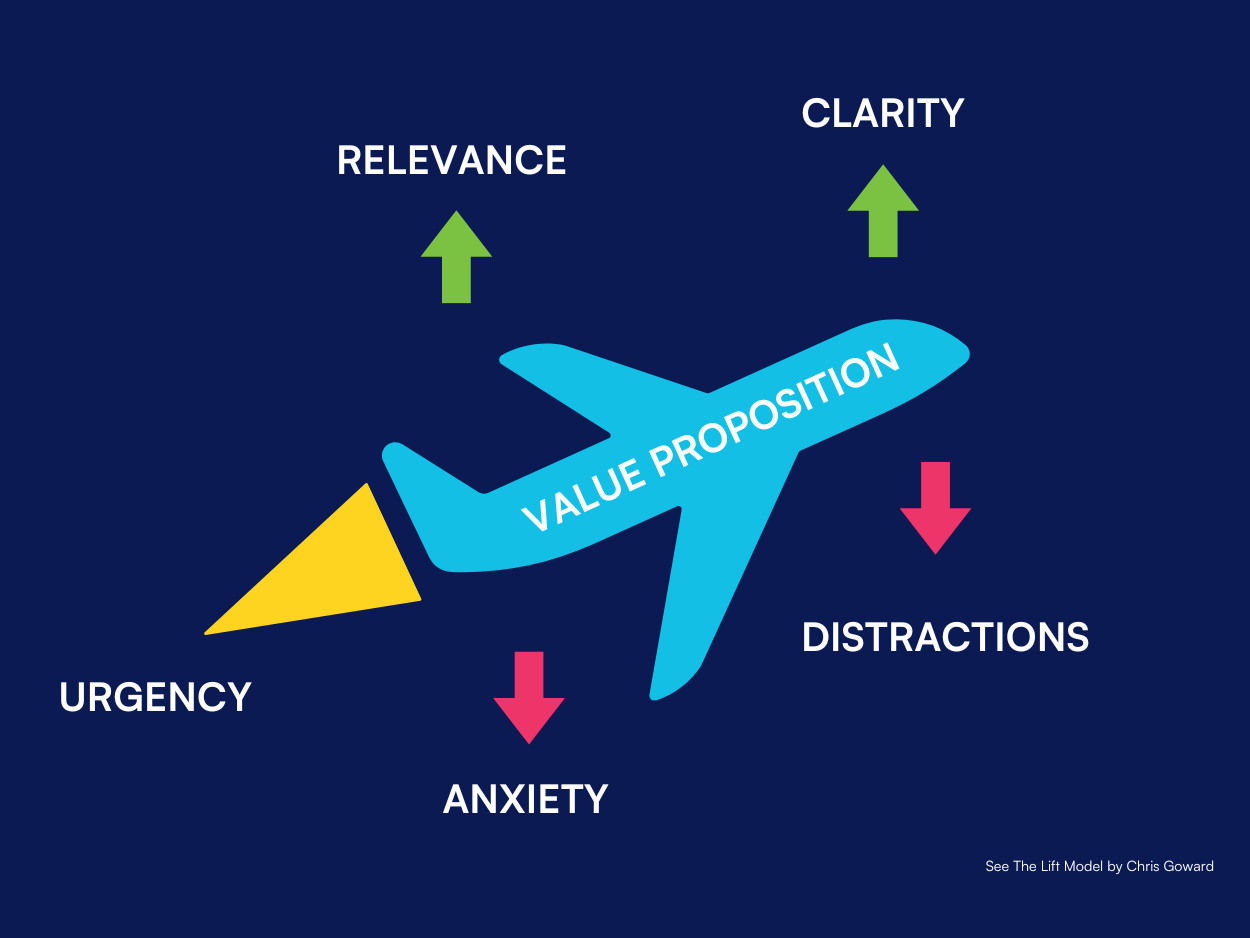
Optimising your website with the LIFT Model
I have been involved in several presentations and seminars recently, and one takeaway seems to have been the LIFT Model. Essentially it’s an easy to remember model that brings structure to subjective feedback. Optimising your website for engagement, sign-ups or sales is key to maximise your online performance and get the best results online.
Here's how you can use the LIFT Model to optimise your website for B2C ticket sales.
What is the LIFT Model?
The LIFT Model, developed by Chris Goward at WiderFunnel, is a framework that helps improve the conversion rate of a website. It focuses on six key elements:
- Value Proposition
- Relevance
- Clarity
- Urgency
- Anxiety
- Distraction
By addressing each of these elements, you can create a more compelling, user-friendly experience that encourages visitors to engage with your brand or buy online - ticket purchases are especially important for many of the attraction brands that we work with.

At it’s core, you need a compelling value proposition that’s clear, relevant and avoids distracting or worrying your users…
1. Value Proposition
Your value proposition is the primary reason why a customer should buy from you rather than your competitors. It should be clear and compelling. For online ticket sales, this could include unique selling points like exclusive access, discounts, or VIP experiences. Ensure your value proposition is prominently displayed on your homepage and key landing pages in a way that resonates with your target audience demographics.
2. Relevance
Relevance is all about aligning your website’s content with what your target audience is looking for. For B2C ticket sales, ensure that your website speaks directly to your audience's interests and needs. Use personalised content, dynamic pricing, and targeted marketing messages to make your website more relevant to different segments of your audience.
3. Clarity
Clarity refers to how easily your visitors can understand your message and navigate your site. A cluttered website with confusing navigation or lots of options and small print can deter potential buyers. Ensure your ticket sales process is straightforward, with clear calls to action (CTAs), easy-to-read text, and a logical flow. Use visual aids like images and videos to enhance understanding.
4. Urgency
Creating a sense of urgency can significantly boost sales. Highlight limited-time offers, countdown timers, and stock levels to encourage immediate action. For example, phrases like “Only 10 tickets left” or “Early bird discount ends in 2 days” can prompt visitors to purchase sooner rather than later.
5. Anxiety
Anxiety refers to the fears or concerns that might worry your potential customers and prevent them from converting. Addressing these anxieties can improve your conversion rate. For ticket sales, this might include concerns about payment security, refund policies, or event details. Provide clear information, showcase customer testimonials, and offer guarantees to alleviate these concerns.
6. Distraction
Distractions are elements on your website that divert attention away from your primary conversion goals. Minimise unnecessary elements that could lead visitors away from purchasing tickets. Streamline your design, remove or reposition less critical links, and focus on guiding visitors through the sales funnel.
Implementing the LIFT Model
To effectively implement the LIFT Model, start with a thorough analysis of your current website. Be sure to look through key pages and user journeys ON YOUR PHONE, and do this regularly with your team. Identify areas for improvement within each of the six elements and use tools like heatmaps, A/B testing, and user feedback to gather data and validate any ideas to test. Regularly update and refine your strategies based on performance metrics to continually enhance your website’s effectiveness.
Conclusion
Optimising your brand’s website for sales or engagement using the LIFT Model can lead to higher conversions and improved customer satisfaction. By focusing on your value proposition, relevance, clarity, urgency, anxiety, and distractions, you create a seamless and compelling user experience that can help to boost your online results.
At Semantic, we can help in applying tools like the LIFT Model to help our clients achieve their business goals.
Get in touch if you need help or would like one of us to discuss potential ideas and solutions to help bring your brand to life online.
